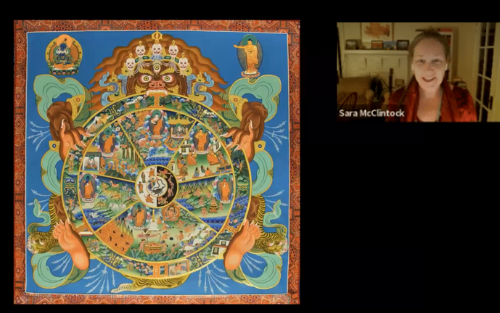Buddhist theories of birth and rebirth are known for their complexity. While the law of karma can be expressed simply as “you reap what you sow,” the psychological and metaphysical processes by which karma functions are not easy to grasp. In ancient India, Buddhist monks developed a method for teaching laypeople about these theories visually. The “wheel of life” is a depiction of these processes that was traditionally painted on the outside of a monastery’s walls as a site of instruction for visiting pilgrims. Included in the image are clues to both the gross and subtle aspects of reincarnation—including graphic portrayals of heavens, hells, human, animal, and ghost realms—as well as symbolic representations of the subtle mental states that lead beings to take birth in these various destinies.
In a lecture titled “The Wheel of Life: A Buddhist Visual Pedagogy,” Sara McClintock, associate professor in the Department of Religion, “reads” a new work in the museum’s collection of Asian art, a thangka painting depicting the “wheel of life,” created in 2021-22 by master painters at the Norbulinkga Institute in Dharamsala, India, a companion to the śamatha thangka.





